
Resilience is in hot demand these days. Leaders demand it of their teams. Employers demand it of their businesses. But what does resilience actually mean – and how can we improve it?
Picture a leaking water pipe, constantly dripping onto the floor below. Each drip on its own appears to have little effect... but is actually doing significant harm. The floor beneath is being eroded drip by drip. And over time that floor weakens, until it gives way entirely.
Workplaces across the world are under the same pressure. It’s not one or two events which have caused the damage. It’s the constant flood of them. Now business confidence is eroded and employees are burned out.
Resilience is our ability to adapt to changing situations. It helps us deal with challenging situations, ‘roll with the punches’ and emerge stronger for the experience.
A business resilience program keeps organizations protected and employees empowered. See these examples of workplace resilience - then download the full guide.
Contents:
1. What is Workplace Resilience?
2. Assessing Your Workplace Resilience
3. Operational Resilience Examples
4. Employee Resilience Examples
What is Workplace Resilience?
Workplace resilience means having the right processes and systems to anticipate, respond to and recover from disruptions. It requires having the right people to manage an event and respond to it.
The importance of resilience in the workplace has never been greater. Lack of resilience can lead to heightened stress and anxiety, which undermines workplace productivity and relationships.
Strong workplace resilience is made up of two parts:
- Operational resilience – keeping the organization running
- Employee resilience – keeping staff engaged and productive
Building workplace resilience doesn’t just protect organizations against current or emerging threats. It also protects against future threats or long term threats whose affects are only visible months, or even years, later.
Internal communications are important to build resilience at an operational and employee level. Focusing on both supports the development of robust, flexible processes and an engaged, empowered workforce.
 “Resilience is about being able to withstand events and prosper. If you can adapt and overcome, of course that’s great, but you want to be able to prosper during adverse situations. That’s what resilience is really focused on.”
“Resilience is about being able to withstand events and prosper. If you can adapt and overcome, of course that’s great, but you want to be able to prosper during adverse situations. That’s what resilience is really focused on.”
Tom Crane
Certification Program Manager, Everbridge
Assessing Your Workplace Resilience
Building a resilient workplace begins with a risk assessment of your current situation. Consider how well your organization understands the types of threats it could face. How well is it equipped to deal with the impacts of these?
- Systems and processes - Do you have situational awareness to keep people safe and maintain essential operations?
- Employee intel - Do you have the insights and procedures to monitor staff morale and address issues?
- Communication and collaboration - Do you have internal communications which foster an informed, engaged and productive workplace?
Organizations with strong workplace resilience have a comprehensive business resilience plan for evaluating threats to employees and the business and responding proactively. This includes threat monitoring, workplace wellness checks, protective measures and life safety procedures.
 “The lack of attention to resilience can be very costly on bottom line performance. Morale and cohesion among team members can suffer greatly. The trickle down effects of that play out in terms of employee recruitment and retention and reputation for the brand.”
“The lack of attention to resilience can be very costly on bottom line performance. Morale and cohesion among team members can suffer greatly. The trickle down effects of that play out in terms of employee recruitment and retention and reputation for the brand.”
Steven M. Crimando, CMA, BCETS, CHPP, CTM
Principal and founder - Behavioral Science
Operational Resilience Examples
Leaders must be able to adapt their plans more agilely as changes in the market or new opportunities arise. Annual strategic reviews aren’t enough when crises and change are happening more quickly than ever.
Almost half of executives are implementing business processes for this, according to a McKinsey & Company study.
1. Emergency events
Maintaining safety before and during crises is a major part of business resilience and disaster recovery. Identify emergencies, major crimes and other threats to your business using risk awareness software and keep affected employees informed.
Ensure staff understand your emergency procedures and can act swiftly and decisively when an event occurs. Incorporate education sessions and practice drills into your workplace training programs.
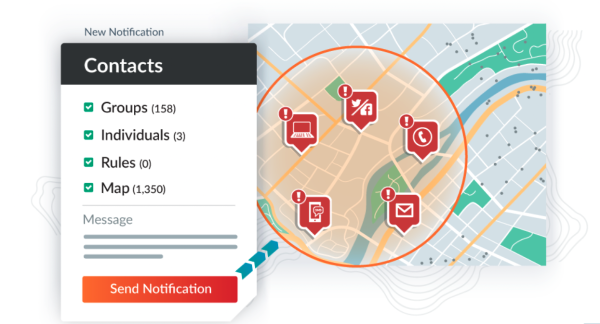
2. Productivity
When crisis or major change threaten an organization, employee productivity drops and business operations are impeded. Resilient workplaces have processes and redundancies in place to maintain efficient running throughout.
Formalize the steps your organization must follow in the event of significant disruption. For example if core systems aren’t available or if you need to revert to remote working. Use high-impact communication channels, such as pop-up desktop alerts, to notify staff and provide direction.
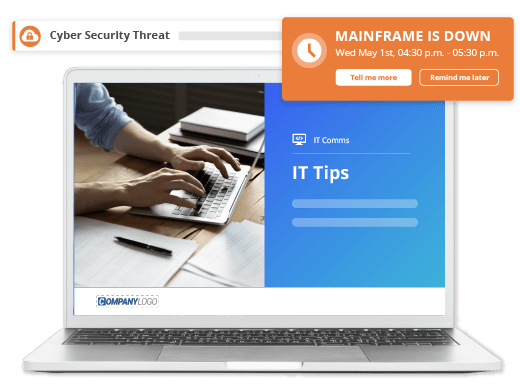
3. Flexibility and creativity
Embedding flexibility and creativity into your operating models makes your organization more adaptable when change occurs. Those which are rigid and uninspired will be more vulnerable to threats.
Review your working environment to identify areas where flexibility could be extended. For example in hybrid working, staggered hours or compressed work weeks. Promote your workplace as an ideas factory, with dedicated creative spaces and communities.

Employee Resilience Examples
Building a resilient workforce helps reduce the affect that crises and change can have on them.
By equipping employees with the right skills and behaviors, they develop the confidence and determination to work through setbacks. Resilient employees display better problem-solving and communication, have more effective professional relationships, and achieve more positive results.
1. Change management
Effective change management communication strengthens employee resilience, and protects organizations against declines in morale, productivity and performance.
Use leadership videos and digital newsletters to consolidate news and updates to demonstrate transparency, quash rumors and engender confidence among staff. By providing reassurance and minimizing roadblocks to success, employees are inured against the fear of future change.
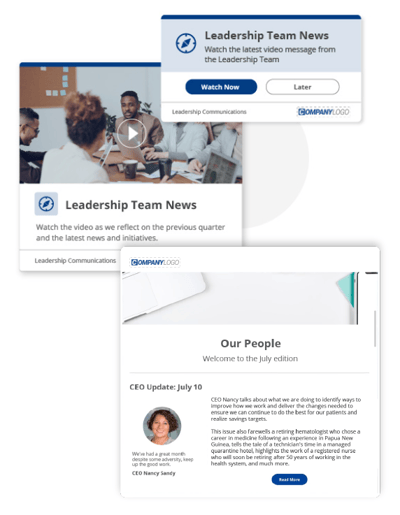
2. Stress and burnout
Staff have been working under stressful working conditions for so long that employee burnout is skyrocketing. It’s a complex and serious issue, which staff may not be able to manage alone.
Make social support and counselling services available to build employee resilience. Promote them through prominent visual messaging, such as via computer lock screen displays. Include these in your induction training for new hires to help them better manage stress from day one.
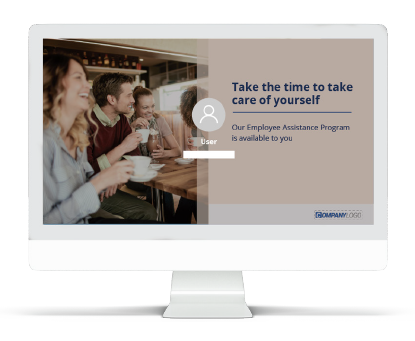
3. Skills and development
Training and development are an important part of building resilience and encouraging retention. Increasing employees’ competencies and expertise enhances their career development and bolsters their self-worth.
Provide resilience in the workplace training to improve employees’ general skills. Work with them to develop plans for role-specific skills, including independent training programs, conferences, coaching and mentoring.

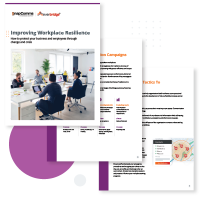 Proactive, engaging communication prepares your organization and workforce for potential risks. In developing resilience it positions the organization for survival and growth, whatever threats may arise.
Proactive, engaging communication prepares your organization and workforce for potential risks. In developing resilience it positions the organization for survival and growth, whatever threats may arise.
Download this free guide for the full story – examples, strategies and expert advice.

